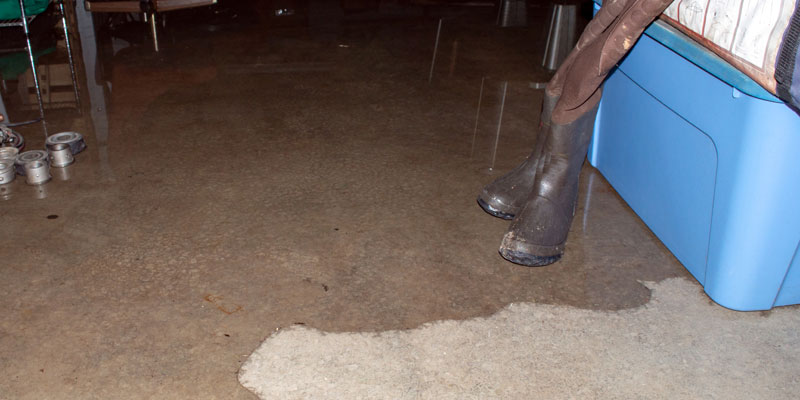Basement flooding is a common problem in most homes. Whether it’s caused by rain, melting snow, or a clogged drain, the result can be devastating. In this blog post we’re going to go over some ways you can prevent basement flooding from happening at your home!
Clean the Floor Drains Out
One of the most common causes of basement flooding is clogged floor drains. Debris in your floor drains can obstruct the pipes for when water does get into your basement. This can lead to buildup that causes flooding. To prevent it from happening, regularly clean your floor drains located in your home’s interior. This will reduce the chance of potential basement flooding.
Check Your Gutters
Another common problem that leads to basement flooding is clogged gutters. If your home’s gutters are clogged, it can cause water runoff and pooling near your house. The fall is the most important time of year to take care of your gutters, as this is when they’re most likely to get clogged from leaves and branches from autumn rainstorms and falling leaves.
Divert Rainwater
If you have an exterior drain near your basement, try diverting the water away. Having a secondary drainage system for excess rainfall will help make sure that rainwater doesn’t find its way into your home’s interior or foundation! You could also extend your rain gutter downspouts and make sure your yard doesn’t slope toward the house.
Test Your Sump Pump
If you have a sump pump installed in your basement, make sure that it’s working properly and isn’t malfunctioning or broken. Sump pumps are primarily responsible for removing excess groundwater from basements during periods of heavy rainfall. Test your sump pump by pouring a 5-gallon bucket of water into the sump pit. If the pump is operational, it will turn itself on, remove most of the water from the pit, then turn itself off again. Make sure the power cord is plugged in and secure so it cannot become tangled in the pump’s float switch and prevent it from turning on.
Have a Backup Sump Pump or Power Source
If the power goes out in your home, a functional backup sump pump is essential. You can install a battery-operated or gas-powered backup system to ensure that water removal will continue even if there’s an outage of electricity!
Install a Backwater Valve
A backwater valve is a mechanical device placed in your home’s main plumbing line, typically located at the lowest point of the basement floor drain. It automatically opens when there’s an extreme flow or prolonged backup in your sewage system and closes after there is no more water coming into the house. This will help prevent sewer-backups from entering through toilets, drains, showers etc., which can cause significant damage to homes with basements!
Foundation Cracks
If you have foundation cracks, make sure that they’re sealed up. This will prevent water seepage into the basement and prevent flooding!
Flood Insurance
Flood insurance is a great way to protect your home. Flood insurance typically covers up to $250,000 in structural damages and additional living expenses that are covered by homeowners’ policies don’t apply when flooding occurs. Make sure you have this if you live near any bodies of water.
Conclusion
If you’re on a tight budget, there are multiple ways to prevent basement flooding without breaking the bank.
Clean your floor drains and make sure your gutters aren’t clogged up during fall when they’re most likely to get obstructed by fallen leaves! Check for any foundation cracks and set up a backup system in case of power outages. Lastly, get flood insurance if you live near bodies of water such as rivers or lakes because it only takes one big storm event to cause significant damage that could ruin your home’s interior!
If you have issues with your plumbing system, contact Bodenheimer Plumbing Services


